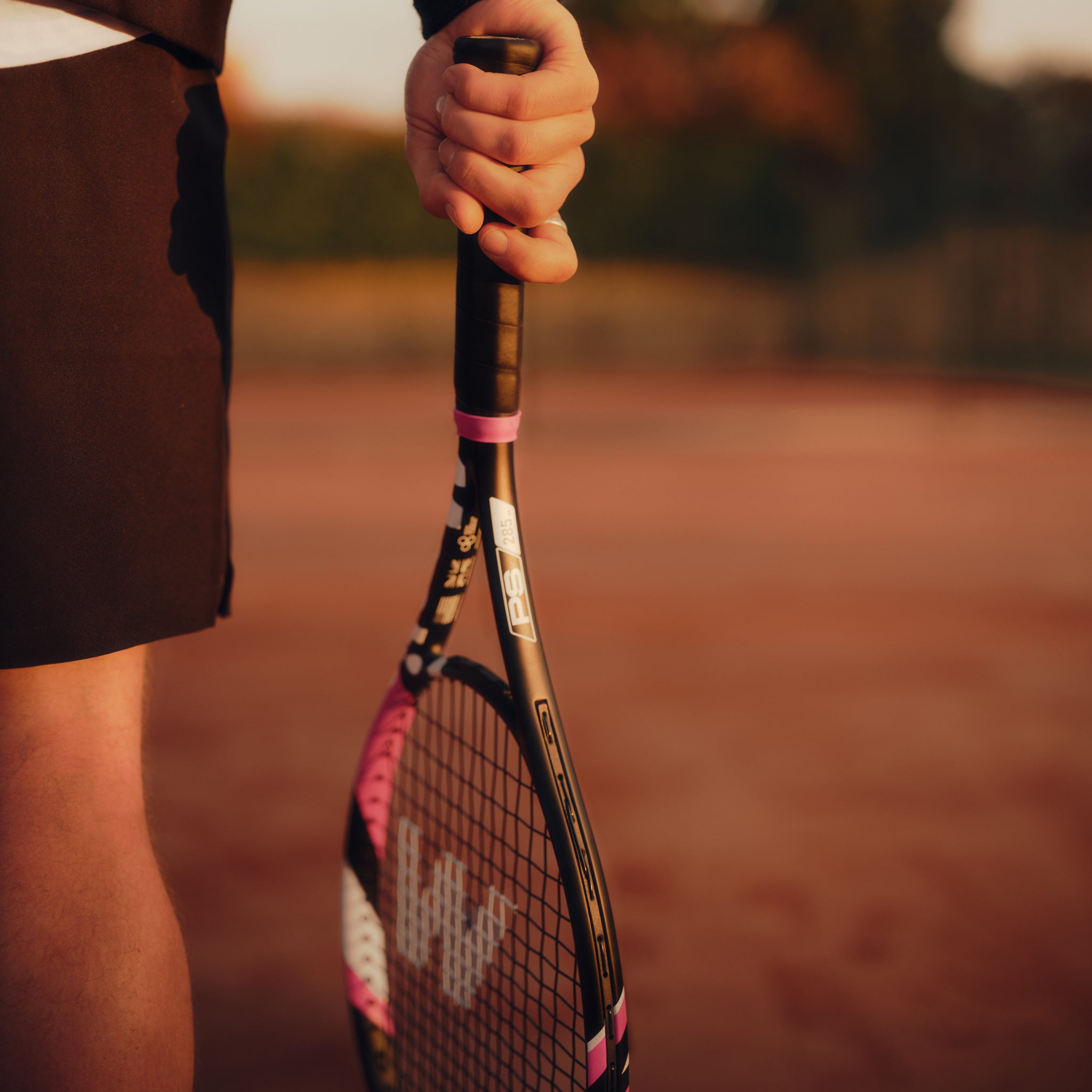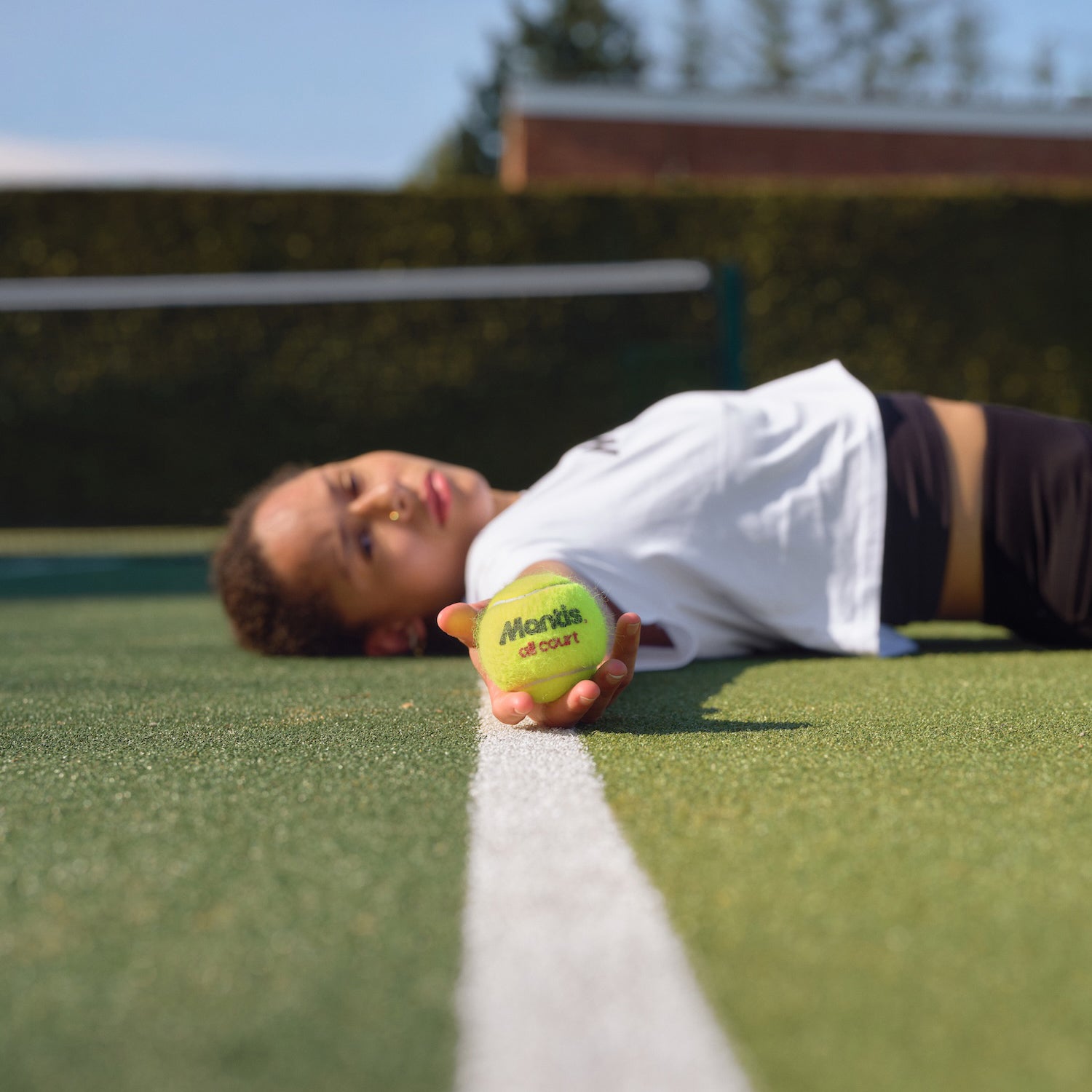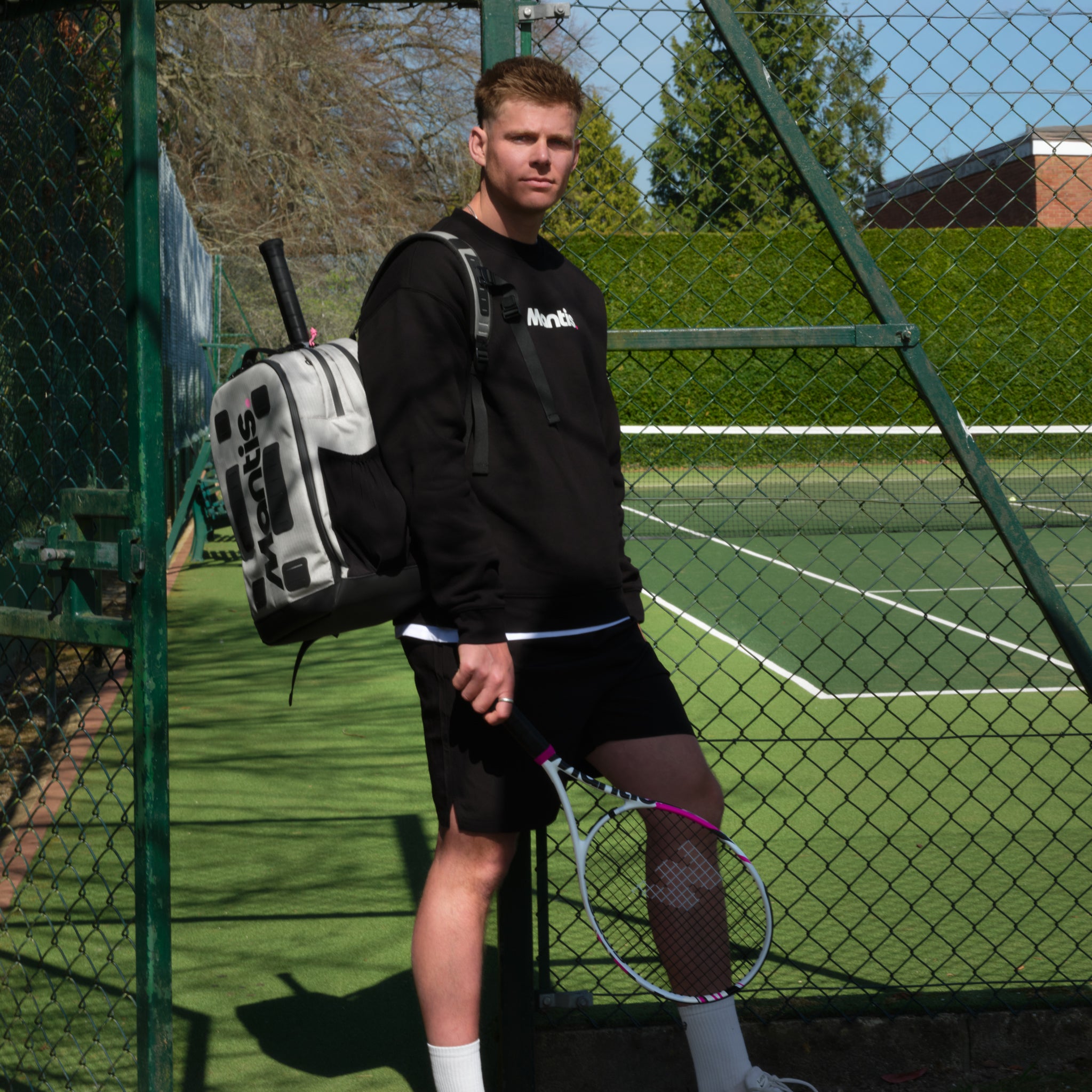
The backhand. For many club players, it's a source of frustration-a rally-ender, but not in the way they'd hope. For the pros, however, it's a weapon of surgical precision and immense power. What separates the two? It's not just talent; it's a dedication to mastering the fundamentals. A reliable backhand isn't just about hitting the ball back; it's about control, strategy, and confidence. It opens up the entire court, turns defence into attack, and keeps your opponent constantly guessing. In a game of fine margins, a solid backhand can be the single biggest difference-maker.
This guide moves beyond generic advice to provide a series of detailed, actionable tennis backhand tips. We will explore the critical components that transform this stroke from a liability into a formidable weapon. You will learn to refine everything from the way your fingers grip the racket to the final flourish of your follow-through, gaining insights used by elite players. We will cover mastering grip variations, perfecting your footwork, developing a consistent backswing, and optimising your contact point. Prepare to transform your weakest shot into your greatest asset.
1. Master the Proper Grip
The grip is the very first point of contact between you and your racquet, making it the non-negotiable foundation of every shot. For the backhand, an incorrect grip can lead to a loss of power, a lack of control, and even injury over time. Establishing the correct hold is one of the most crucial tennis backhand tips you can implement, as it sets the stage for proper swing mechanics and effective power generation.
Whether you favour a single-handed or double-handed stroke, a specific grip configuration is required to present the racquet face correctly at impact. Without it, you will constantly fight your own technique, trying to make compensations mid-swing.
One-Handed vs. Two-Handed Grips
Your choice of a one-handed or two-handed backhand will determine your grip. Neither is inherently superior, but each has its champions, such as Stan Wawrinka with his powerful one-hander and Novak Djokovic with his famously precise two-hander.
- One-Handed Backhand: The most common grip is the Eastern backhand grip. To find it, start with a forehand grip and rotate your hand anti-clockwise so the base knuckle of your index finger rests on the top bevel of the handle (bevel #1). This alignment provides a natural mix of power and control.
- Two-Handed Backhand: This grip combines the strengths of both hands. Your dominant (bottom) hand should adopt a Continental grip, while your non-dominant (top) hand uses an Eastern forehand grip. This setup allows the non-dominant hand to drive the shot, providing stability and rotational power.
Actionable Tips for Grip Mastery
Consistently using the correct grip requires conscious practice until it becomes second nature. To get comfortable, you need to build muscle memory.
Key Insight: A reliable grip is not something you find once; it's something you reinforce with every practice session. Check your hold before every backhand you hit until you no longer need to think about it.
Start by simply shadow swinging in front of a mirror, focusing on switching from your forehand grip to your backhand grip smoothly. Progress to hitting against a practice wall, which gives you the repetition needed to ingrain the correct feel. Using high-quality tennis grips and overgrips can also improve the tactile feedback from the racquet, making it easier to feel if your hand is in the correct position.
2. Perfect Your Footwork and Court Positioning
A powerful and consistent backhand is built from the ground up. Proper footwork is not just about getting to the ball; it's about arriving in a balanced and organised position, ready to execute a technically sound stroke. Poor positioning forces you to reach, lean, or make last-second adjustments, which compromises power and control. Nailing your footwork is one of the most impactful tennis backhand tips because it ensures you can hit from a stable, efficient base every single time.
The primary goal is to set up at an optimal distance from the ball, allowing you to make contact slightly in front of your body and at a comfortable hip-to-shoulder height. This ideal contact point is only possible with precise, intentional movement patterns that get you there on time.
Movement Patterns for the Backhand
Different situations on the court demand different types of footwork. Learning to deploy the right pattern instinctively is a hallmark of an advanced player. From Andy Murray's legendary defensive scrambling to Steffi Graf's famously precise setup for her sliced backhand, elite footwork is a common thread.
- Closed Stance: For powerful, drive backhands, a closed stance is often ideal. This involves stepping across your body with your front foot, which helps generate rotational force from your hips and shoulders.
- Open Stance: When pressed for time or hitting a return of serve, an open stance allows for a more compact, quicker preparation. It relies more on upper-body rotation but is crucial for modern, fast-paced rallies.
- Cross-Over Steps: To cover lateral distance to the backhand side efficiently, use dynamic cross-over steps. This movement is faster than shuffling and helps maintain momentum as you approach the ball.
Actionable Tips for Footwork Mastery
Improving your footwork requires dedicated, off-ball practice. The focus should be on creating explosive, balanced, and repeatable movements that become second nature during a match.
Key Insight: Great players don't just run to the ball; they move to a specific spot relative to where the ball is going to be. Focus on getting your feet set before you start your forward swing.
To enhance your agility and court coverage, incorporate specific drills into your routine. Agility ladder drills sharpen foot speed, while cone drills can simulate moving to various court positions for a backhand. During these exercises, concentrate on first-step quickness and maintaining your balance through each change of direction. To maintain stability and prevent sprains during these quick movements, especially when perfecting your footwork, consider using an ankle stabilizer.
3. Develop a Consistent Preparation and Backswing
A rushed or inconsistent backswing is a primary cause of mishits and weak returns. Early preparation is the antidote, providing the time and space needed to execute a powerful, controlled shot. This principle is one of the most fundamental tennis backhand tips, as it dictates the entire rhythm and effectiveness of your stroke. A well-timed preparation sets you up for success before you even begin your forward swing.
The moment you identify the ball is heading to your backhand, the preparation sequence must begin. This involves a synchronised 'unit turn' where your shoulders and hips rotate together, moving the racquet back in a smooth, fluid motion. The goal is to have the racquet at its furthest point back just as the ball bounces on your side of the court, ensuring you have optimal time to swing forward into the contact point.
The Unit Turn and Backswing Shape
The quality of your preparation is visible in the techniques of top professionals. Simona Halep's compact two-handed backswing is a masterclass in efficiency, while Roger Federer’s elegant one-handed preparation showcases a larger, more classical loop. What they share is an immediate unit turn and a seamless take-back.
- The Unit Turn: This is the cornerstone of preparation. By turning your torso as one unit, you automatically bring the racquet back and load your body for a powerful, rotational swing. This prevents you from relying solely on your arm, which is a common mistake that leads to weak, uncontrolled shots.
- Backswing Shape: For a two-handed backhand, the non-dominant hand should guide the racquet back, keeping the swing compact. For a one-hander, think of a 'C' or loop shape, allowing gravity to help generate racquet-head speed. The key is finding a motion that is repeatable and doesn't take the racquet too far back, which can make you late on the ball.
Actionable Tips for Better Preparation
Developing a great backswing is about building a habit of preparing early and efficiently. Your focus should be on creating a smooth, rhythmic motion that becomes second nature under pressure.
Key Insight: Your backswing should not be a frantic jerk backwards. It is a deliberate, graceful move that puts you in the perfect position to attack the ball. Focus on smoothness over speed during the take-back.
To ingrain this, practice unit turn drills. Stand a few feet from a wall or fence and shadow swing, focusing on turning your shoulders and bringing the racquet back as soon as you say "go". Make sure your shoulders remain relaxed throughout the motion to avoid tension. This simple exercise builds the muscle memory required for timely and effective preparation in a real match.
4. Focus on Contact Point and Follow-Through
While grip and footwork get you into position, the moment of truth in any tennis stroke happens at the point of contact. This is where all your preparation translates into a successful shot. For the backhand, establishing a consistent and effective contact point is one of the most vital tennis backhand tips for achieving both power and precision, dictating whether your ball flies true or sprays wide.
The ideal contact point for a topspin or flat backhand is slightly in front of your lead hip, allowing you to extend through the ball and use your body's kinetic energy effectively. Contacting the ball too late (behind you) robs you of power and control, while contacting it too far in front can lead to mishits. The follow-through is not just an afterthought; it is the natural continuation of a well-executed swing that ensures deceleration and balance.
Ideal Contact and Follow-Through Mechanics
The specifics of your contact and follow-through will vary slightly depending on the shot you intend to hit, but the core principles, popularised by modern coaching programmes, remain the same.
- Topspin Backhand: Make contact in front of your body with a slightly closed racquet face (angled slightly downwards). The follow-through should be long and fluid, finishing high over your opposite shoulder. This "low-to-high" path imparts the necessary spin, as seen in Novak Djokovic's famously reliable cross-court backhands.
- Flat Backhand: For a powerful, driving shot like Stan Wawrinka's down-the-line laser, the contact point is also in front, but with a perpendicular (vertical) racquet face. The follow-through is more linear, extending straight through the target line before finishing across the body.
- Slice Backhand: For a slice, as mastered by players like Ashleigh Barty, the contact point is still out in front but with an open racquet face. The swing path is "high-to-low," with the follow-through extending forwards towards the target to keep the ball low and skidding.
Actionable Tips for a Better Contact Point
Developing a feel for the correct contact point and a smooth follow-through requires deliberate practice and repetition. Focus on quality over quantity during your training sessions.
Key Insight: A great backhand isn't about hitting the ball as hard as you can; it's about making clean contact in the right place. The power is a natural result of a well-timed, efficient swing, not brute force.
Start with slow-motion shadow swings to memorise the feeling of the correct swing path and contact location. Hitting against a practice wall is an excellent way to build consistency. Focus on keeping your head still through the contact zone, which helps maintain balance and allows you to track the ball precisely onto the strings. Progress to drills where you hit balls at varying heights and speeds to adapt your timing.
5. Master Both Topspin and Slice Variations
Relying on a single type of backhand makes you predictable and limits your tactical options. A complete player can adapt to any situation, and that means mastering both topspin and slice variations. This versatility is one of the most impactful tennis backhand tips for elevating your game from solid to formidable, allowing you to control the point's tempo, exploit opponent weaknesses, and defend effectively.
Adding both shots to your arsenal turns your backhand from a simple rally shot into a strategic weapon. You gain the ability to hit a heavy, dipping topspin passing shot or a low, skidding slice that forces your opponent to hit up, creating an opportunity for you to attack. This dual threat keeps your opponent guessing and off-balance.
Topspin vs. Slice: The Tactical Difference
The choice between topspin and slice depends entirely on the situation you face on the court. Each shot serves a distinct purpose, popularised by legends like Bjorn Borg with his revolutionary topspin and John McEnroe with his masterful slice.
- Topspin Backhand: This is your primary offensive and rallying tool. By swinging from low to high and brushing up the back of the ball, you generate forward spin. This causes the ball to dip aggressively into the court and kick up high after the bounce, pushing your opponent back. Think of Rafael Nadal's heavy, looping backhand that pins players behind the baseline.
- Slice Backhand: This is a versatile shot used for defence, approach shots, and changing the pace. The swing path is high to low with an open racquet face, imparting backspin. The ball travels with a lower trajectory and stays low after the bounce, often forcing an error or a weak reply. Roger Federer’s elegant slice was a cornerstone of his all-court game, used to neutralise rallies and set up forehand winners.
Actionable Tips for Developing Both Spins
To become truly proficient, you must practise both shots deliberately until you can switch between them instinctively. Your goal is to make the decision to hit topspin or slice a subconscious reaction to the incoming ball.
Key Insight: Don't treat topspin and slice as two separate strokes. Instead, view them as two options on a single backhand wing. Integrate drills that force you to transition between them in the same rally.
Start by dedicating time in each practice session to both variations. Hit cross-court topspin backhands for five minutes, then switch to cross-court slice backhands. Progress to a drill where your partner feeds you balls, and you alternate between hitting topspin and slice on command. This builds the muscle memory and tactical awareness needed to deploy the right shot at the right time during a competitive match.
6. Build Strength and Flexibility for Power
Technical prowess on the backhand is only half the battle; the other half is won in your physical preparation. A powerful, consistent backhand is built on a foundation of targeted strength and dynamic flexibility. This physical conditioning allows you to generate explosive racket head speed, maintain balance during rotational movements, and sustain high performance throughout gruelling matches. Neglecting this is one of the biggest roadblocks to improvement and one of the most impactful tennis backhand tips to embrace.
Think of your body as the engine that drives the shot. A stronger, more pliable engine produces more power with greater efficiency and less risk of breaking down. Elite players like Novak Djokovic, renowned for his incredible flexibility and core stability, demonstrate that physical conditioning is not just an add-on but a core component of world-class technique.
Key Areas for Physical Development
To enhance your backhand, your fitness regimen must focus on the specific muscle groups that power the stroke. It is not about generic gym work; it is about functional, tennis-specific strength.
- Core and Obliques: The kinetic chain for a backhand starts from the ground up, with power transferred through the core. Strong obliques are vital for generating the rotational force that whips the racket through the hitting zone.
- Shoulders and Back: A stable shoulder girdle is essential for controlling the racket and preventing injury. The muscles in your upper back (latissimus dorsi, rhomboids) are crucial for pulling the racket across your body with authority.
- Hips and Glutes: Flexibility in the hips allows for a deeper unit turn, while powerful glutes provide the explosive drive needed to push off the ground and rotate into the shot.
Actionable Tips for a Stronger Backhand
Integrating specific exercises into your routine will translate directly to on-court gains. The goal is to build strength that mirrors the movements you make during a point.
Key Insight: Your off-court training should directly support your on-court goals. Every exercise should have a purpose related to improving a specific part of your game, like adding pace and stability to your backhand.
Begin incorporating medicine ball rotational throws to build core power and resistance band exercises to strengthen your shoulders and back. Unilateral (single-arm) work, such as dumbbell rows, is also highly effective for correcting imbalances. For a more comprehensive approach to physical conditioning, you can explore a practical guide on how to get stronger and apply its principles to your tennis training. Finally, a consistent yoga or stretching routine will unlock the hip and shoulder flexibility needed for a fluid, powerful swing.
7. Practice with Purpose and Progressive Drills
Hitting thousands of backhands without a clear objective will only reinforce existing habits, both good and bad. To truly improve, your practice must be structured and intentional. This means designing sessions that systematically build your technique from the ground up, moving from simple, controlled scenarios to complex, match-like situations. This approach is a cornerstone of modern coaching and one of the most effective tennis backhand tips for sustainable development.
Meaningful practice ensures every ball you hit has a purpose. Instead of just "getting a groove," you are actively working on a specific element of your stroke, whether it's your take-back, contact point, or recovery footwork. This deliberate focus accelerates learning and makes your time on court far more productive.
From Stationary Drills to Live Play
The key to purposeful practice is progression. You must earn the right to advance to more complex drills by mastering the fundamentals first. Start simple to build a solid foundation before adding variables like movement and opponent pressure.
- Stationary Feeding Drills: Begin with a coach or partner feeding you balls to your backhand from a close distance. The goal here is pure technique. Focus on your grip, unit turn, and swing path without the complication of movement.
- Movement-Based Drills: Once your form is consistent, start adding movement. Practice hitting cross-court and down-the-line backhands on the run. A great example is the "two-ball drill," where you hit one backhand from the centre and then recover to hit another from a wider position.
- Competitive Point Play: Finally, apply your improved backhand in game situations. Play points where you can only score by hitting a backhand winner or forcing an error with your backhand. This bridges the gap between practice and real matches.
Actionable Tips for Productive Practice
To get the most out of every session, integrate specific goals and tracking methods. This turns mindless hitting into a focused training exercise.
Key Insight: Consistency and repetition with proper form are always more valuable than mindlessly chasing power. Build your backhand on a foundation of technique, and the power will follow naturally.
Set specific, measurable targets for each drill. For example, aim to hit 10 consecutive cross-court backhands inside the service box before moving on. Use cones or targets on the court to sharpen your accuracy. Consider recording your sessions on video to analyse your technique afterwards, paying close attention to your footwork and body positioning. This structured approach ensures every practice moves you closer to a reliable, confident backhand.
7 Key Tennis Backhand Tips Comparison
| Item | Implementation Complexity | Resource Requirements | Expected Outcomes | Ideal Use Cases | Key Advantages |
|---|---|---|---|---|---|
| Master the Proper Grip | Moderate; requires muscle memory | Racket, grip tape, guided practice | Improved control, power, injury prevention | Beginners and intermediate players | Enhances control and topspin, reduces injury risk |
| Perfect Your Footwork and Court Positioning | High; demands physical practice | Court space, agility drills, coaching | Better timing, power, and recovery | All skill levels aiming for consistent play | Improves movement efficiency and shot consistency |
| Develop a Consistent Preparation and Backswing | Moderate; needs timing and coordination | Coaching guidance, practice space | Increased shot consistency and disguise | Players wanting smoother shot execution | Provides time for execution, improves shot disguise |
| Focus on Contact Point and Follow-Through | High; requires precise timing | Practice ball feeding, video analysis | Maximized power and accuracy | Intermediate to advanced players | Enhances power transfer and spin control |
| Master Both Topspin and Slice Variations | High; mastering multiple techniques | Coaching, varied drills | Tactical variety and shot unpredictability | Advanced players aiming for versatile shots | Adds strategic variety, keeps opponents off-balance |
| Build Strength and Flexibility for Power | High; needs regular, focused training | Fitness equipment, trainer, space | Increased power, injury prevention, endurance | Serious players focused on physical conditioning | Enhances power and stroke mechanics; reduces injury |
| Practice with Purpose and Progressive Drills | Moderate; requires planning | Practice partners/coaches, court time | Steady improvement, muscle memory | Players aiming for structured skill growth | Systematic skill development with measurable progress |
From Practice Court to Match Point
Transforming your backhand from a potential weakness into a formidable, match-winning weapon is a journey of dedicated and intelligent practice. We have journeyed through the critical pillars of a world-class shot, from the foundational grip to the nuances of purposeful drilling. These are not just isolated instructions; they are interconnected principles that build upon one another to create a reliable, powerful, and versatile stroke.
Synthesising Your Backhand Knowledge
The real breakthrough happens when you begin to synthesise these elements. The perfect grip means little without the correct footwork to get you to the ball. A powerful backswing is wasted if your contact point is inconsistent. True mastery comes from integrating these concepts into a single, fluid motion. The ultimate goal is to move beyond conscious thought, allowing muscle memory, developed through focused repetition, to take over during a high-pressure point.
Remember the key takeaways from our deep dive into effective tennis backhand tips:
- Preparation is Paramount: Early racket preparation and precise footwork are non-negotiable. They create the time and space needed to execute a clean, powerful swing.
- The Swing is a System: View the backhand not as just an arm movement, but as a kinetic chain. Power flows from the ground up, through your legs and core, and is finally channelled through the racket.
- Versatility Wins Matches: A player who can deploy a heavy topspin backhand to push an opponent back and then slice a low, skidding approach shot is infinitely more dangerous. Developing both variations makes you unpredictable and strategically sound.
Actionable Next Steps for Lasting Improvement
Progress is not born from simply reading; it is forged on the practice court. Your next step is to move from theory to application. Do not try to fix everything at once. Instead, adopt a methodical approach.
- Isolate and Improve: Dedicate your next practice session to just one or two of the tips discussed. For instance, focus solely on your footwork patterns for 20 minutes, using shadow swings and simple feeds to groove the correct movements.
- Film and Analyse: Use your phone to record yourself hitting backhands. Compare your technique against the principles we've covered. Are you maintaining your balance? Is your contact point consistently out in front? Visual feedback is an incredibly powerful tool for self-correction.
- Integrate with Purposeful Drills: Move beyond static hitting. Incorporate the progressive drills mentioned, such as the cross-court rally with depth targets or the slice-and-volley drill, to simulate real match scenarios. This is how you transition a technically sound shot into a tactically effective one.
Building a truly great backhand is an investment in your entire game. It unlocks new patterns of play, builds confidence, and turns a potential liability into a source of strength. By consistently applying these expert tennis backhand tips, you are not just improving a single stroke; you are becoming a more complete and formidable competitor. Now, it's time to take this knowledge, step onto the court, and begin the rewarding work of building the backhand you've always envisioned.
Ready to pair your refined technique with equipment designed for precision and feel? Explore the range of high-performance rackets at Mantis, engineered for players who are serious about every detail of their game. Find the perfect frame to complement your new-found backhand prowess at Mantis.








